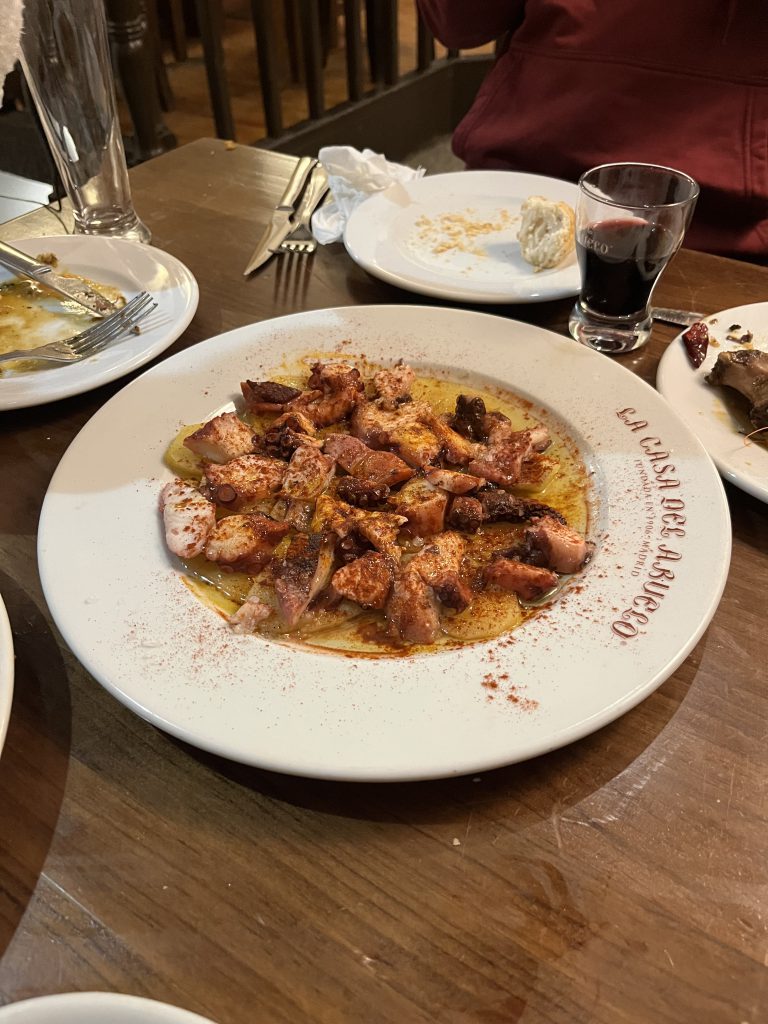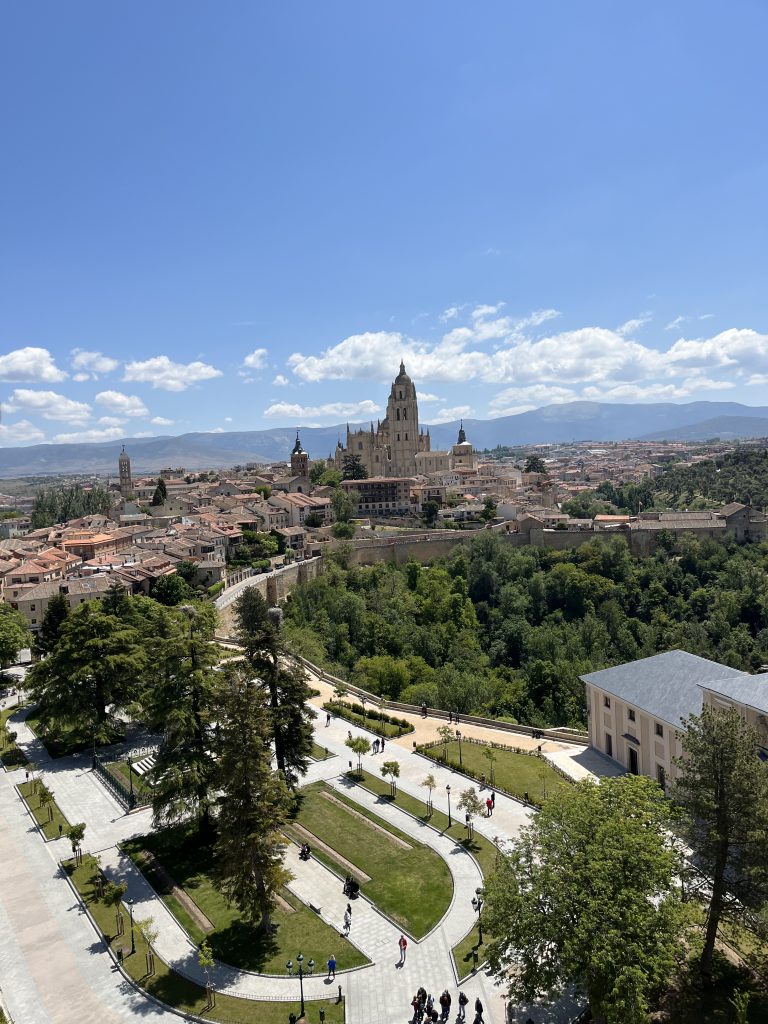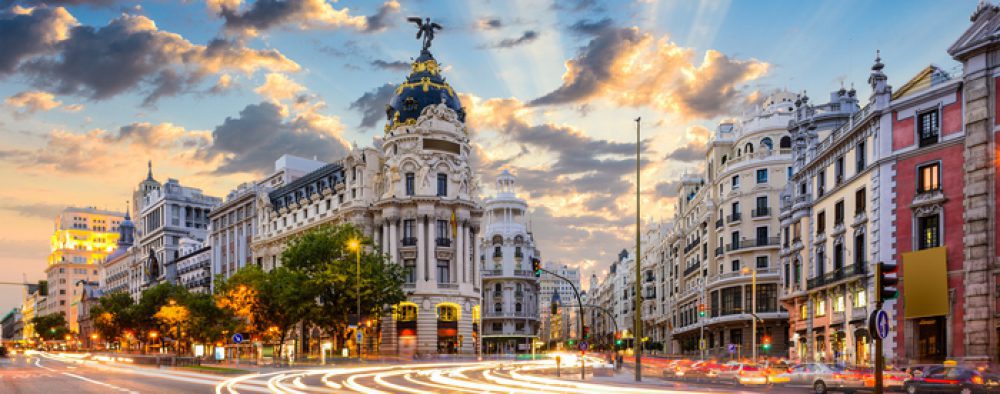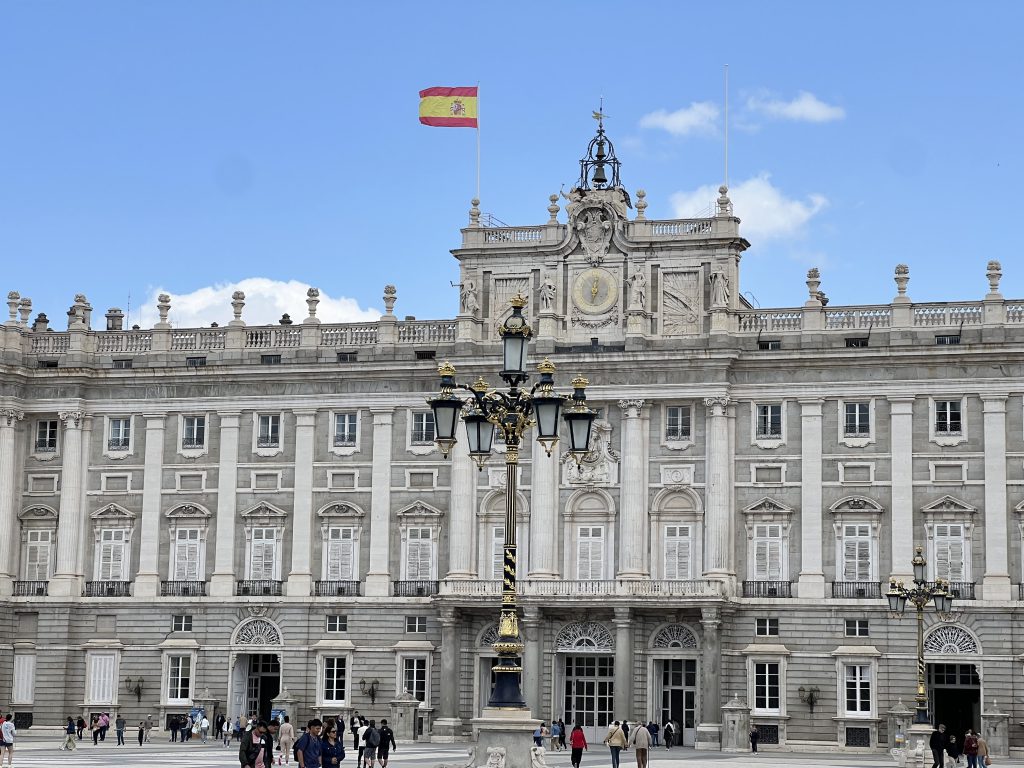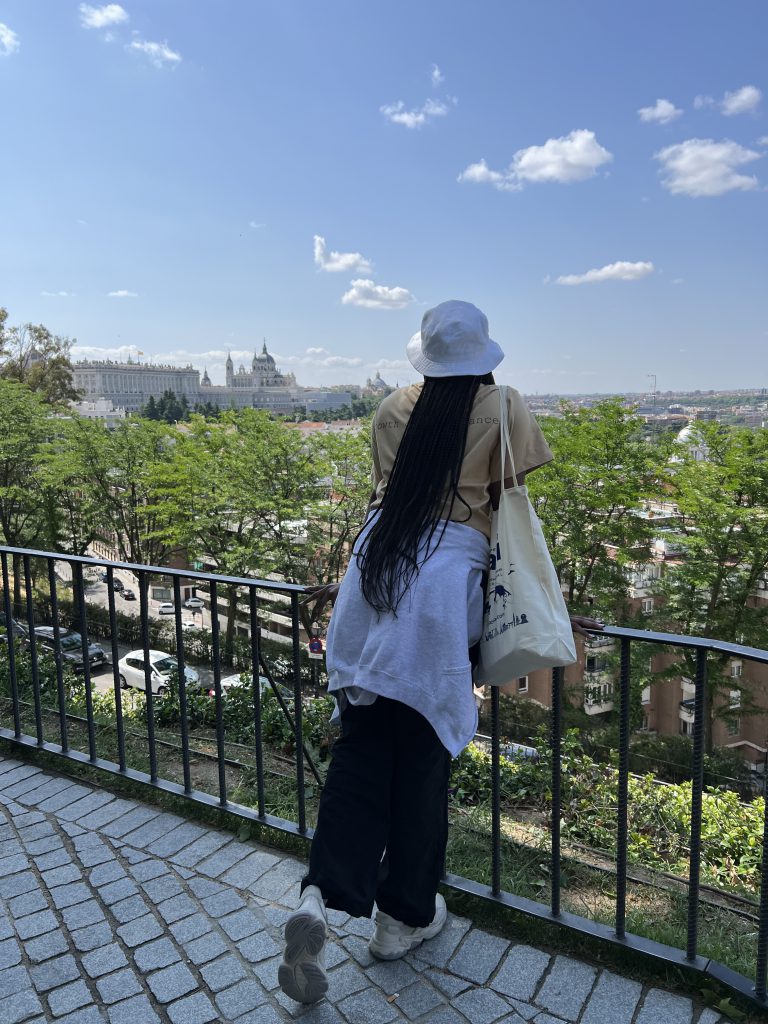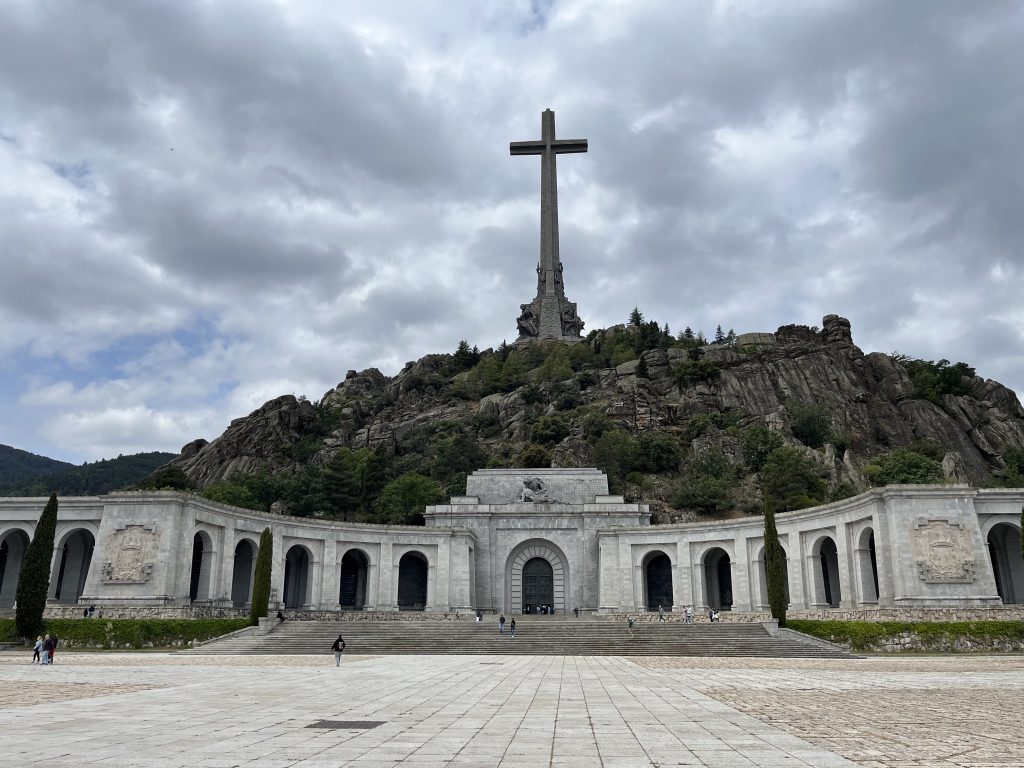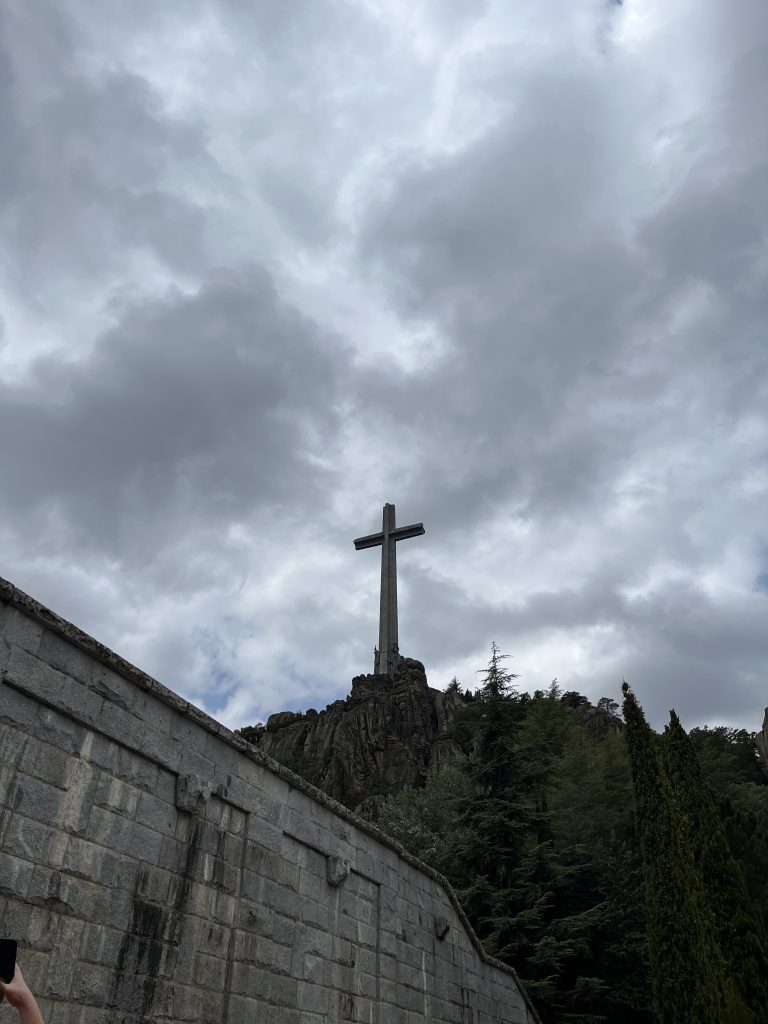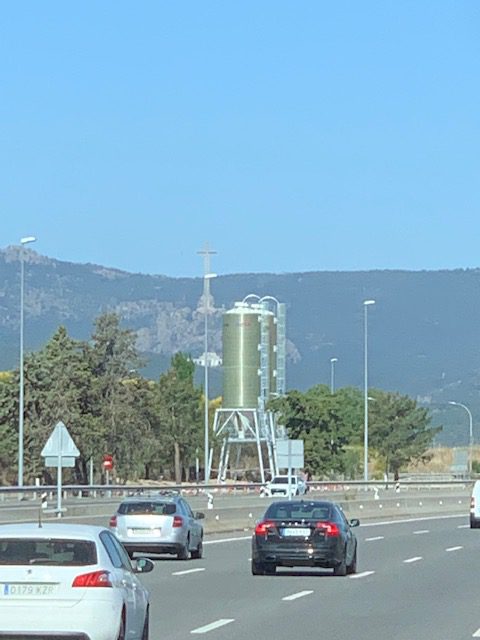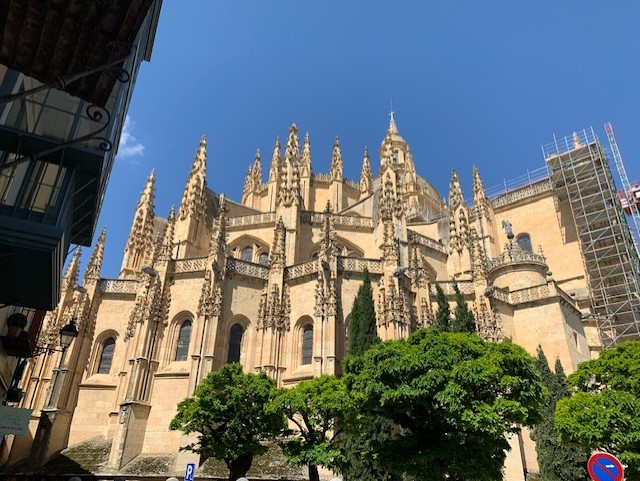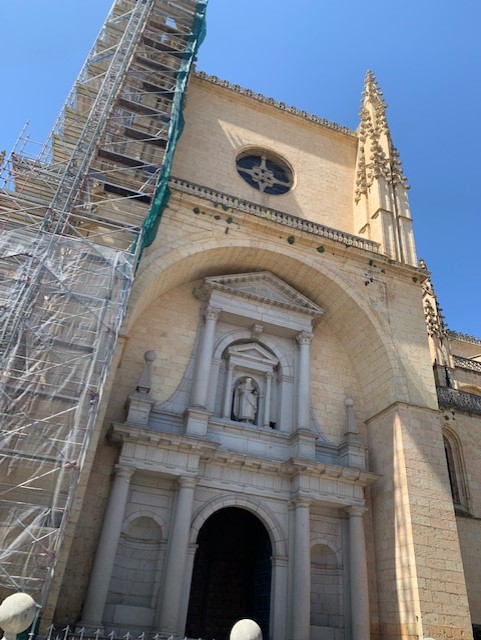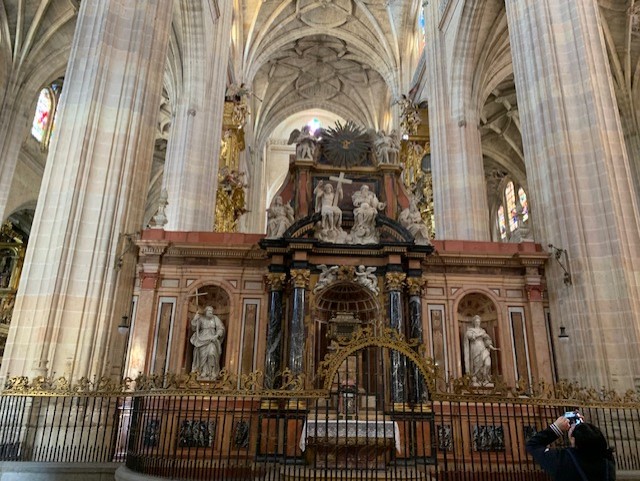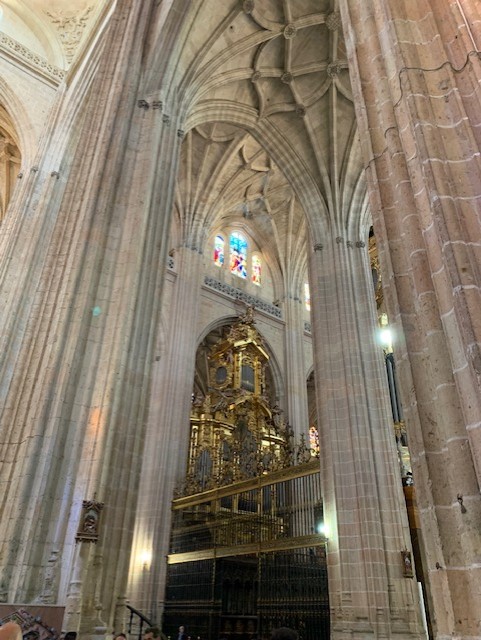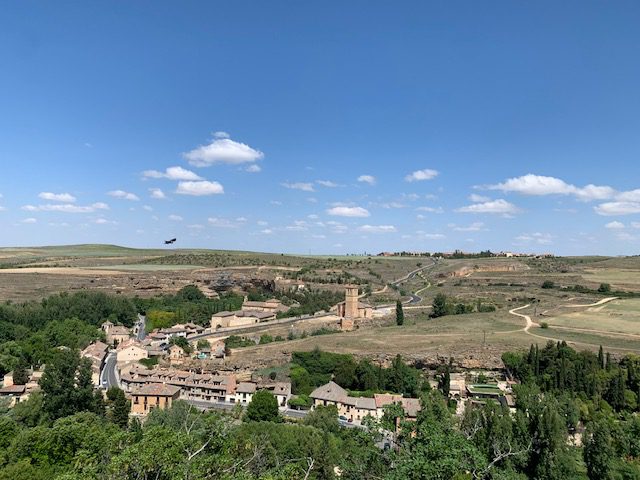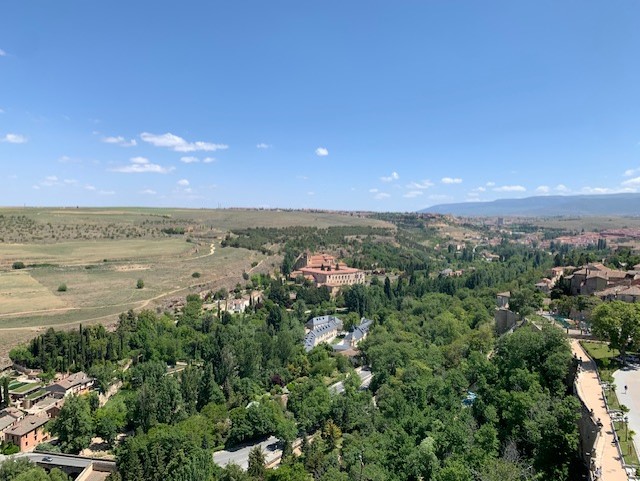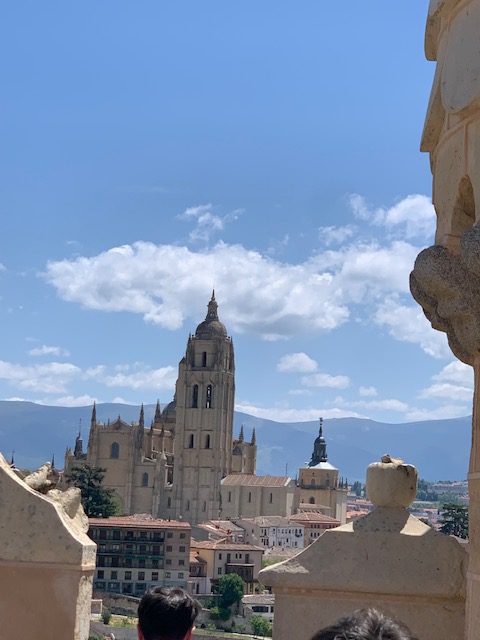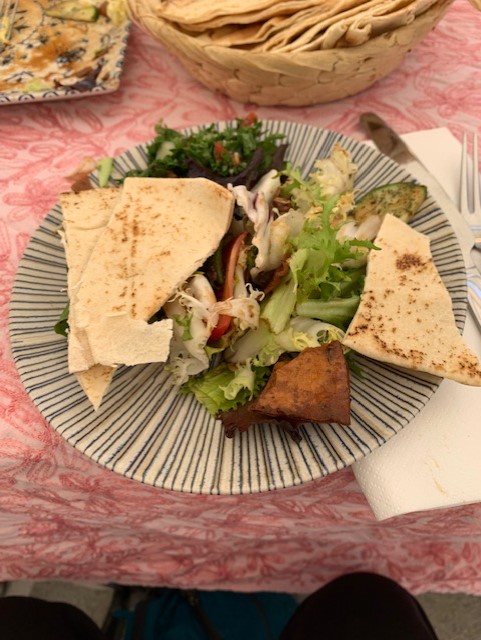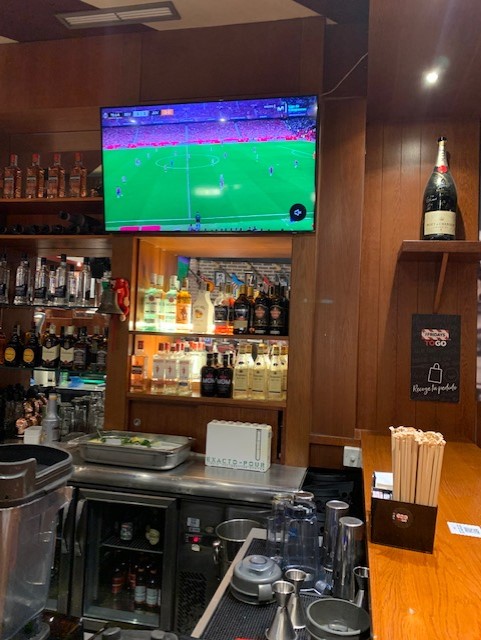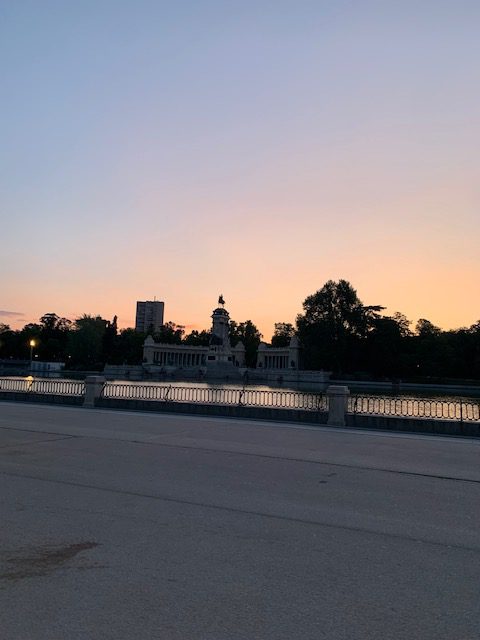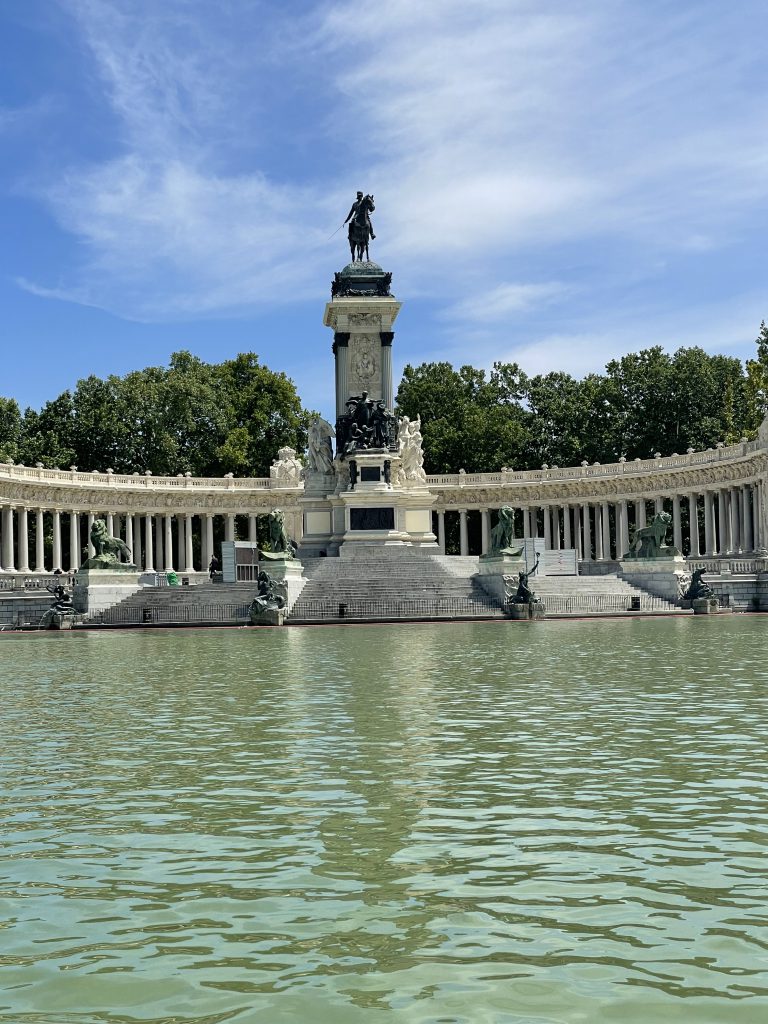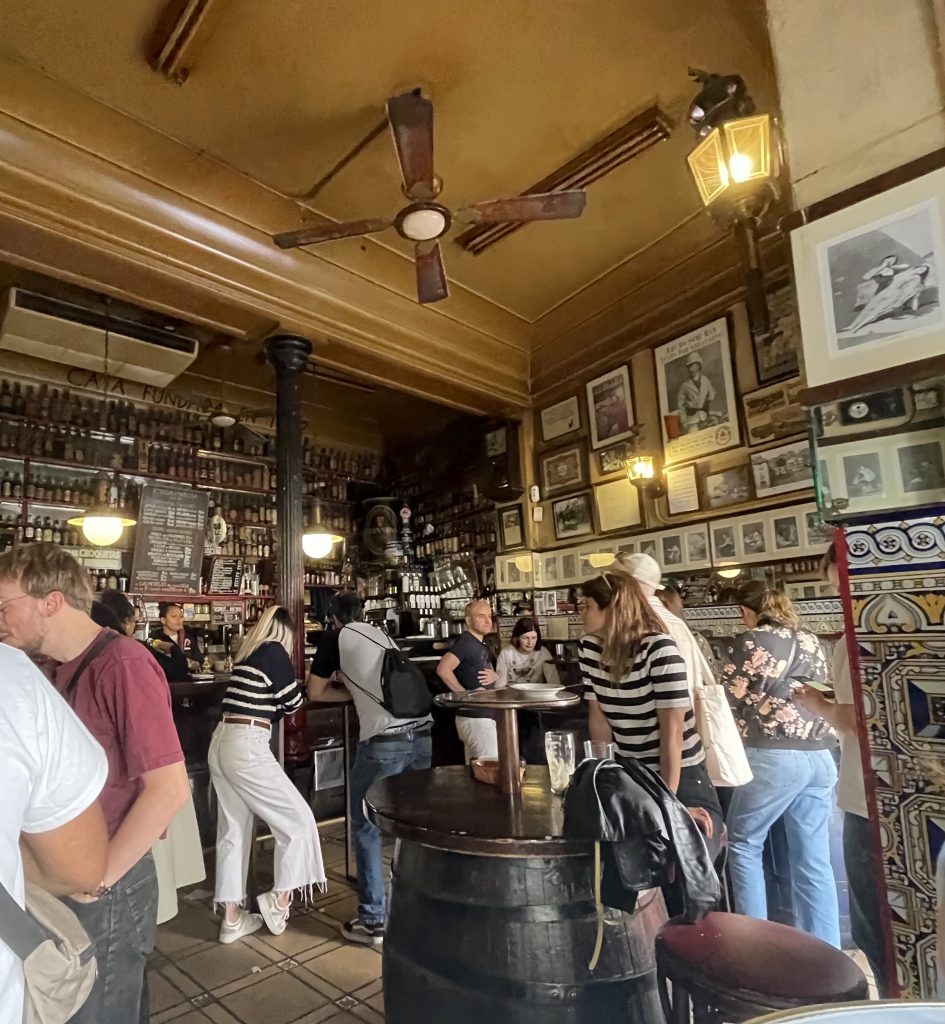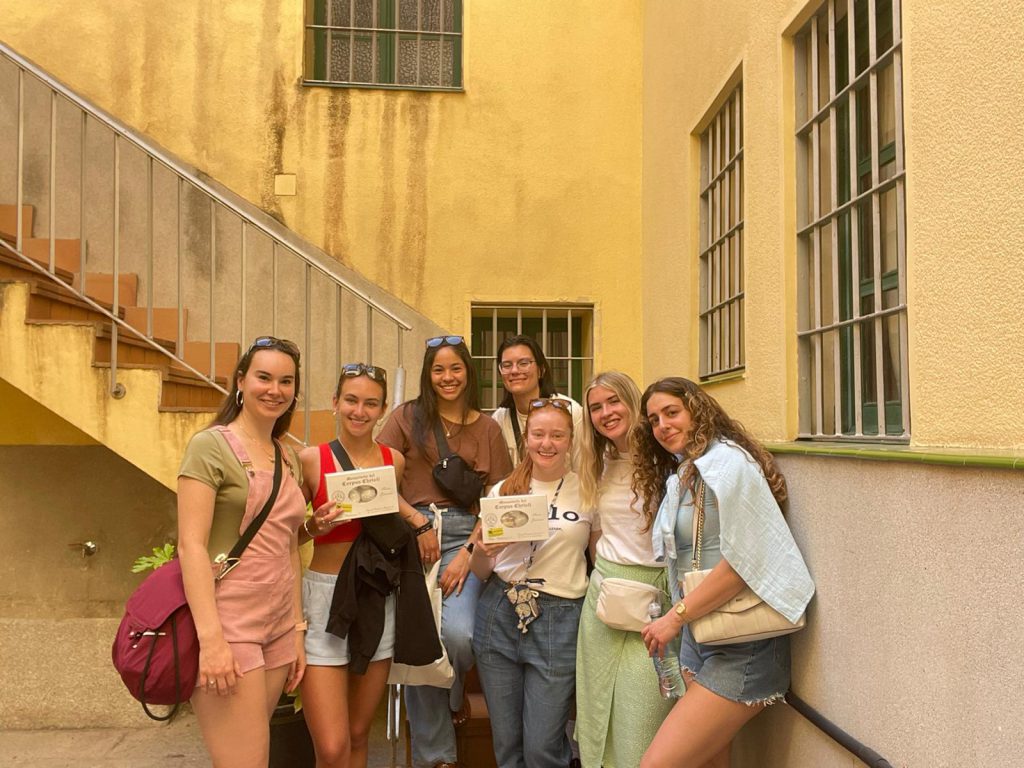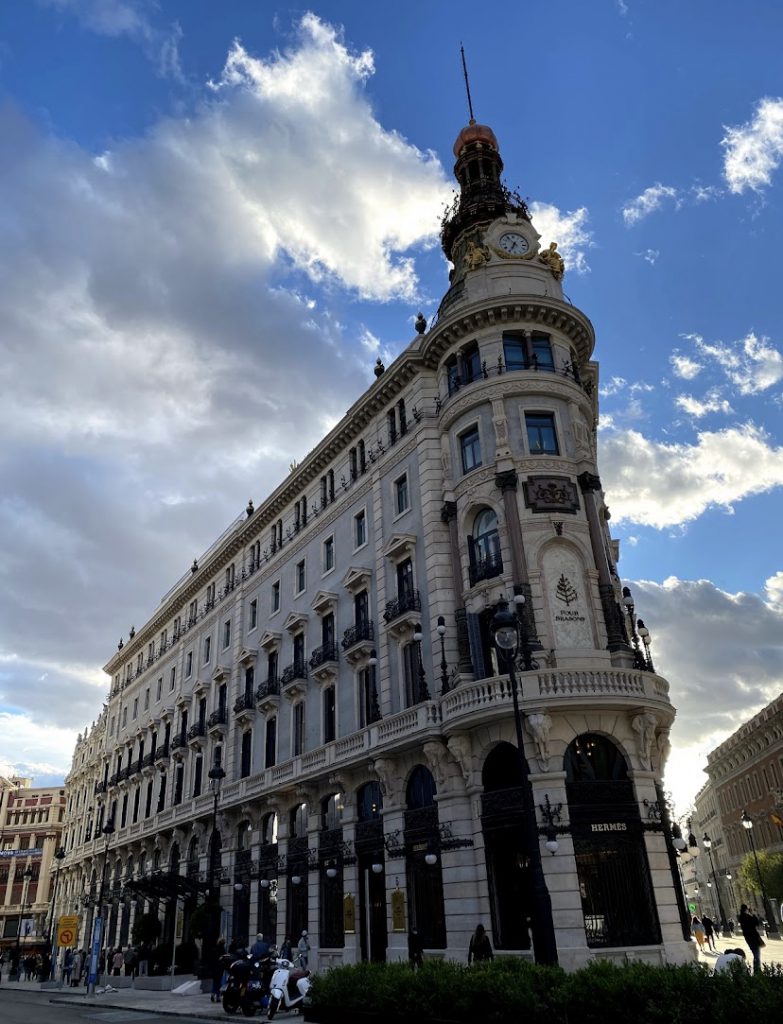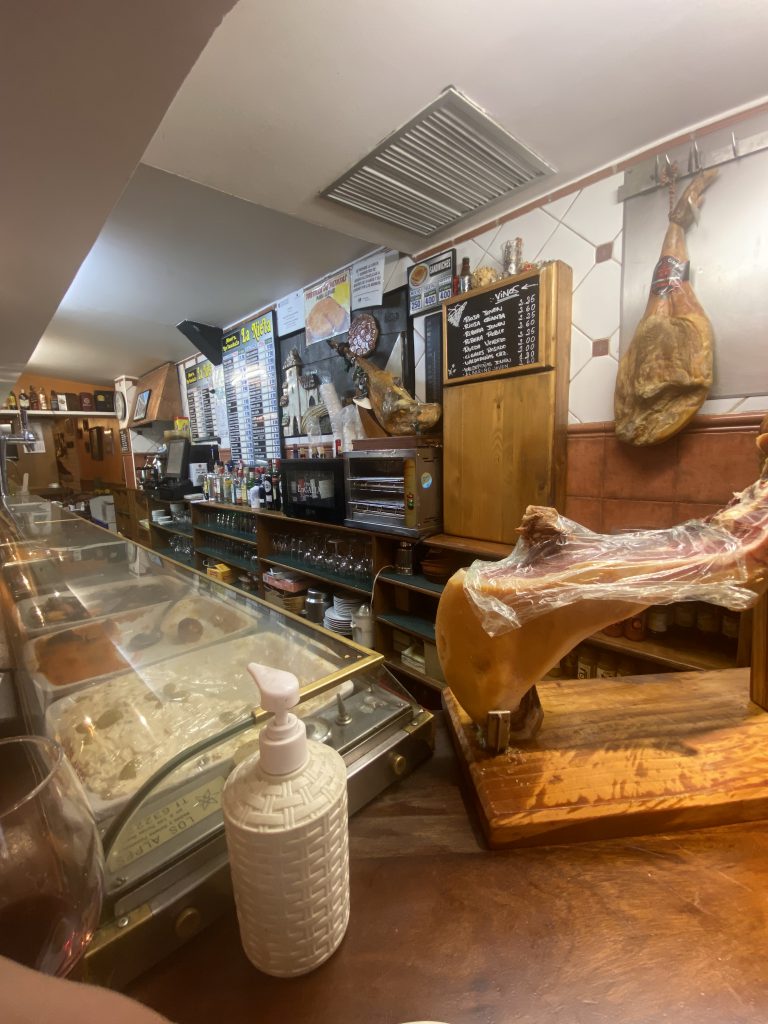For the third day in Madrid, our class scheduled a trip to Segovia, a small city with rich historical significance just northeast of the “Comunidad de Madrid”. Originally settled by Iberian Celts around 700 BCE, the area became truly urbanized once under Roman occupation around 80 BCE. As a result of such early development, modern Segovia has produced a fascinating blend of cultures, architectural styles, and economic practices. Such unique circumstances allowed for the class to quite literally travel through history as they traversed the city.
Aqueduct of Segovia
Upon arriving in Segovia, it would have been impossible to miss its most iconic landmark, a fully preserved Roman aqueduct. Spanning nearly 2,600 feet, the Aqueduct of Segovia was the first monumental site for our class as the bus drove into the heart of the city, an impression that will certainly leave an unforgettable mark on myself personally. Completed either just before or after the death of Emperor Trajan in 117 CE, the Aqueduct has continually represented a symbolic source of pride for the city in even becoming its coat of arms. Each of its granite blocks, weighing around 2,000 to 5,000 pounds, were originally stacked without even the need for cement, utilizing pressure to create structural supports and reaching a height of up to 30 feet. It is a truly impressive feat of Roman engineering that I would have never originally expected to have witnessed when traveling to Madrid. While the Aqueduct of Segovia has not been actually used since 1961, experts are confident that it can still be utilized today!
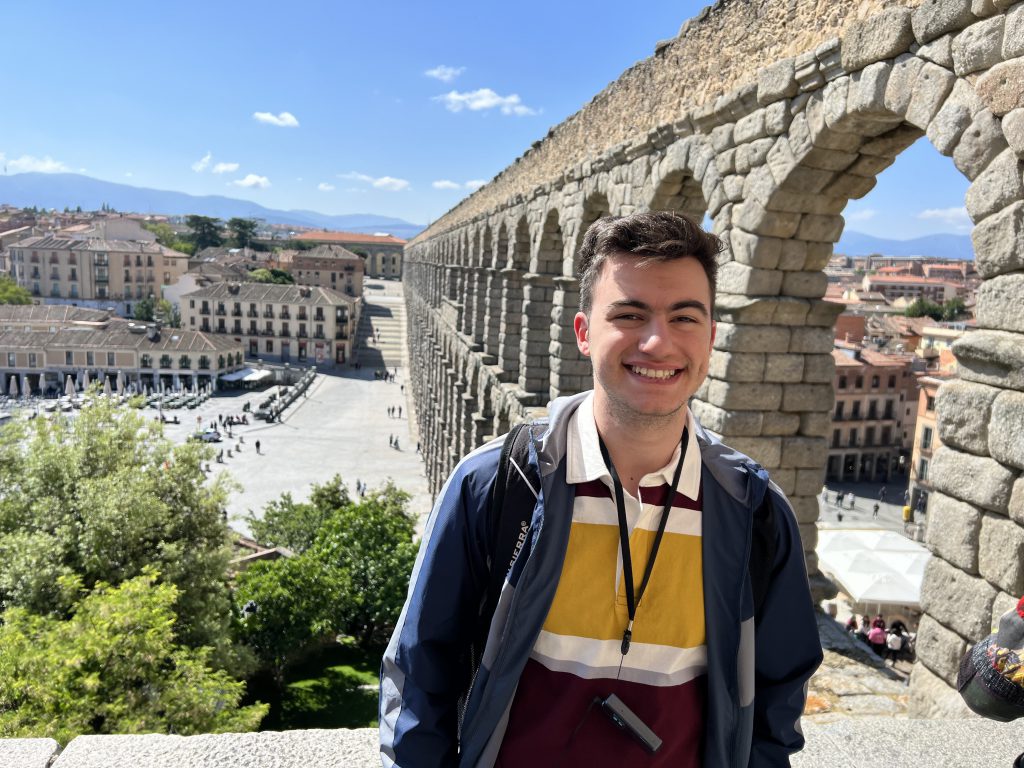
Cathedral of Segovia
Traveling away from the Aqueduct further uphill, our class arrived at the Cathedral of Segovia, a marvelous example of late Gothic architecture and a central tenet of the city’s landscape. Constructed from 1525 to 1577, the Cathedral was a staunch representation of the city’s now purely Catholic identity. When Moorish Muslims fully occupied the Iberian Peninsula by the end of the eighth century, Segovia was almost entirely abandoned until it was reconquered in the late eleventh century by King Alfonso VI of Castile and Leon. The establishment of modern Spain with the conquest of Granada in 1492 then prompted the infamous Spanish Inquisition in which Jewish and Muslim influences throughout the Iberian Peninsula, including in Segovia. This caused the city’s famous Jewish quarter to largely become homogenized with its surrounding neighborhoods as Catholicism became the area’s sole practicing faith. The Cathedral’s high rising ceilings, intricate ornaments, and serene courtyard were a testament of this controversial historical phenomenon.
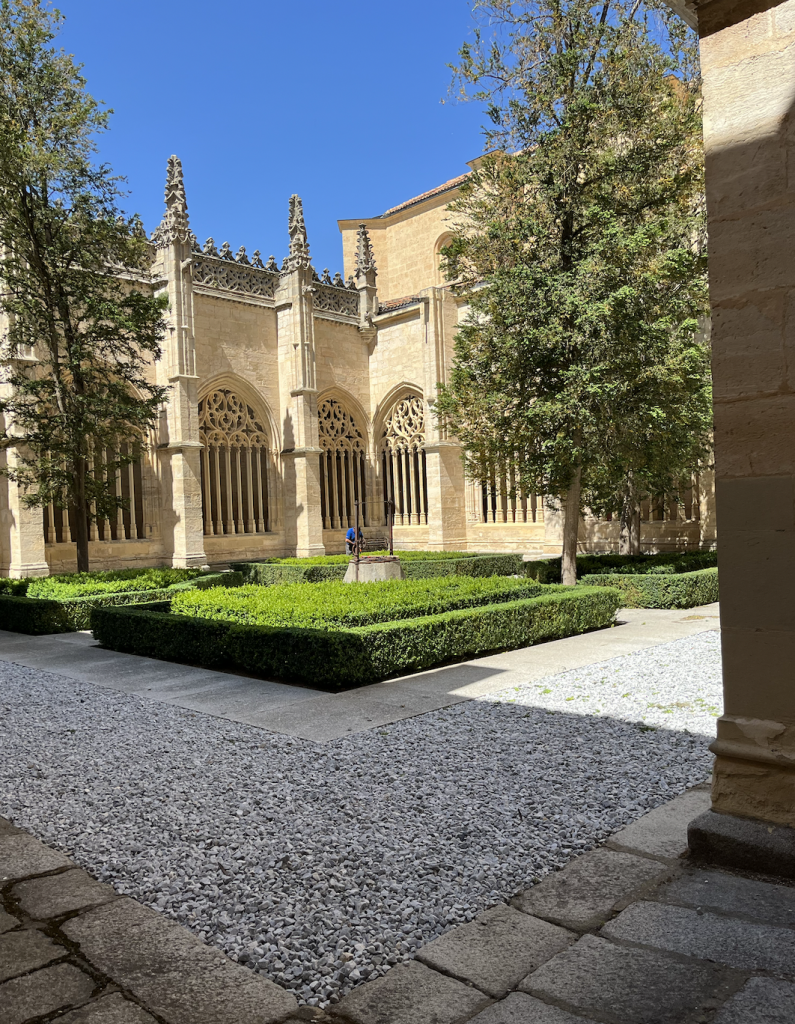
Alcázar of Segovia
Passing the city’s center, we reached the final major landmark of our tour in the Alcázar of Segovia, a unique castle with many different uses throughout its several centuries of existence. However, this particular alcázar has no historical connection to the Moorish Muslims in the area. In fact, despite its Arabic origins, the word, alcázar, was adopted by the Spanish language and is still utilized as a label for Segovia’s flagship castle. The Alcázar of Segovia was originally one of primary residences for the House of Trástamara, which would include the kingdoms of Castile and eventually Aragon, and even witnessed the crowning of Queen Isabella I in 1474. With the rise of the Hapsburg Dynasty in 1516, it would be repurposed into a military academy in 1764. Within the castle itself, the walls are commemorated with marvelous designs by employed Muslim Moors, who were experts at geometric perfection for their time. After traversing through the many royal chambers of the Alcázar, our class climbed 150 steps to reach its top where the Spanish flag flies resoundingly. The view of the rest of the city from this summit was absolutely stunning as the arid countryside provided a complementary background.
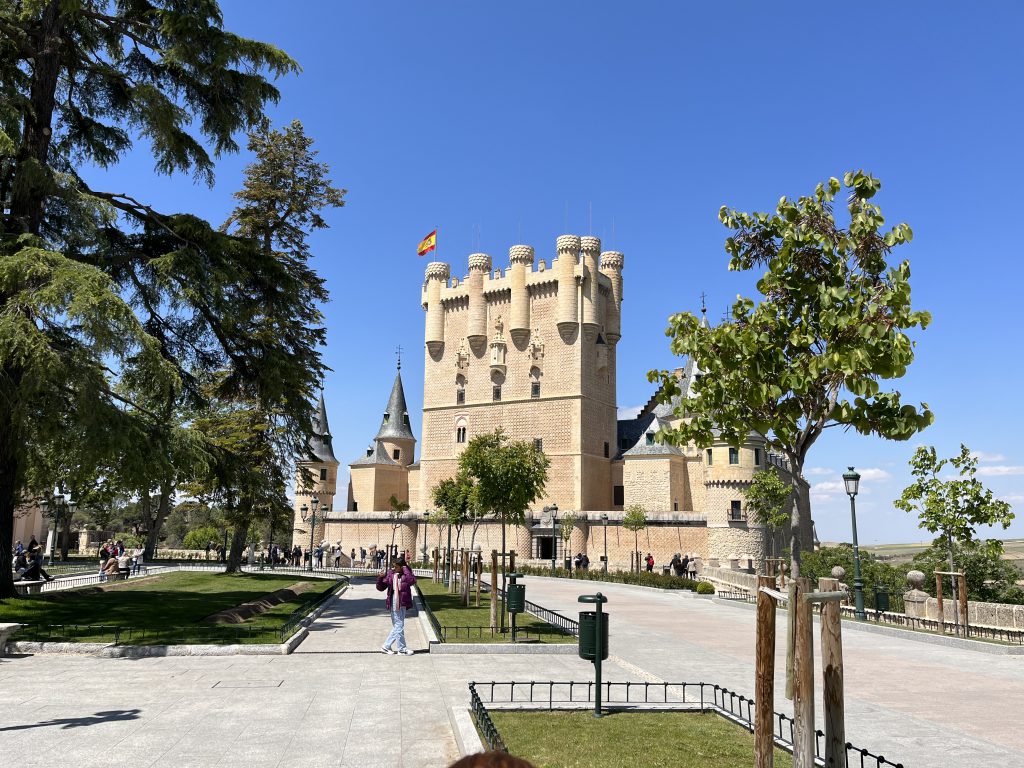
Roast Suckling Pig and Tapas to Finish
After exiting the Alcázar, our tour of the city elapsed, and members of the class dispersed into their own groups for lunch. I personally had the privilege of eating Segovia’s specialty dish at “Restaurante José Maria”, the roast suckling pig! There was some souvenir shopping that followed before we unfortunately were scheduled to return back to Madrid. Despite Segovia’s small stature, I would have certainly devoted several more days to exploring its many historical intricacies when given the opportunity. With such an extensive day, most members of the class, including myself, decided to rest for a few hours before traversing through Madrid once more. Late in the evening, a group of us arrived at “Casa de Abuelo” for dinner where we ate a variety of different tapas, including garlic shrimp, octopus, and beef tail. It was a savory end to an extravagant day!
